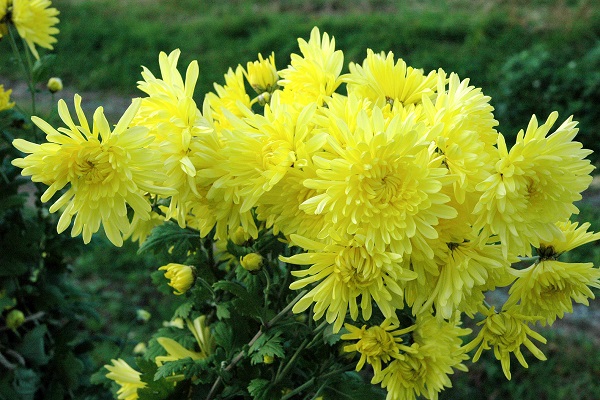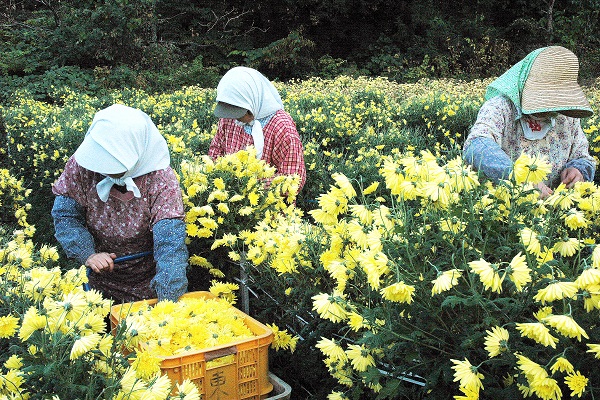Abokyu is the Japanese name for a palace built long ago by Qin Shi Huang, the founding emperor of the Qin dynasty in China. The emperor was known to be extremely fond of chrysanthemums, so much so that a variety of the flower was named after the Abokyu palace that he built.
The environment of Nanbu is particularly well suited to growing the abokyu chrysanthemum and the town has become a major producer of the flower. Abokyu chrysanthemums are a bright and beautiful yellow making them a beautiful and refreshing flower to look at. But rather than their beauty, these flowers are treasured by the people in this area for something else: their taste.
These edible chrysanthemums have unique delicate taste, one that retains the sweetness and slight fragrance of the flowers’ scent. The flavor of the abokyu has none of the bitterness usually found in other chrysanthemum varieties and the petals of the flower have a delectable firmness that borders on almost a crunch.
The abokyu chrysanthemum is often eaten raw or dried, making it available for use in cooking throughout the year. It is a favorite addition to the miso soup of the area to which it is added as a last-minute topping for a charming splash of color and fragrance.
In other parts of Japan, edible chrysanthemums can be found as decorations on high-end dishes like sashimi, but in the town of Nanbu, it is used as an everyday item. From tempura to being mixed into a variety of vegetable side dishes, the flower is not a decorative piece but a major ingredient in local cuisine. Recently, research has shown that the flower has may have detox properties and health benefits, making alluring as it a potential health food.

